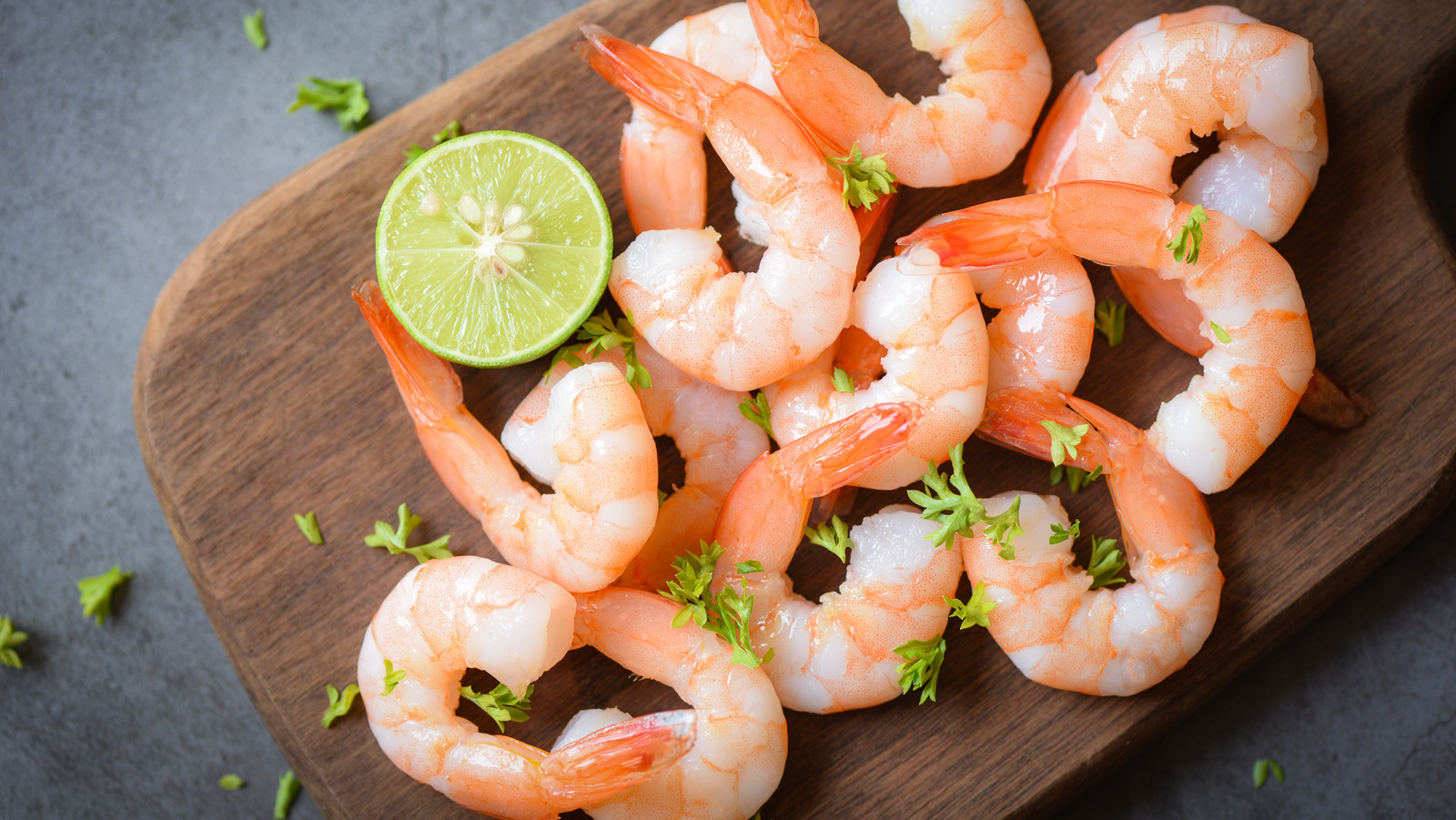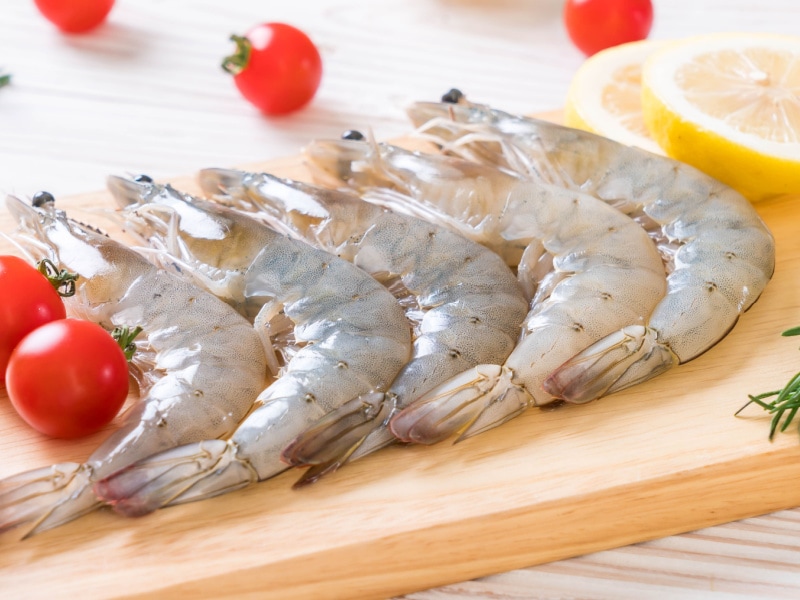There’s no doubt that if you like seafood, shrimp is your favorite. But have you ever thought about how to tell if shrimp is bad?
So, it’s important to know how to identify the signs of spoilage to extend its shelf life.
I know it can be hard to toss out your favorite shrimp dishes. But remember when in doubt, throw it out!.
Shrimp is one of the most popular seafood ingredients around. From shrimp scampi to shrimp cocktail, this versatile shellfish can be prepared in endless delicious ways. However, like any perishable food, shrimp doesn’t last forever. So how can you tell if your cooked shrimp has gone bad?
As a shrimp lover myself I’ve had the unfortunate experience of biting into spoiled shrimp a couple of times. Let me tell you – it’s not pleasant! Consuming bad shrimp can cause food poisoning which leads to stomach cramps, nausea, vomiting, and diarrhea. Not fun at all.
The good news is, with a few simple tips, you can easily determine whether your cooked shrimp is still safe to eat or ready for the trash. In this article, I’ll walk you through the signs of spoiled shrimp and provide tips to store shrimp properly so it stays fresh longer. Let’s dive in!
How to Tell If Cooked Shrimp Has Gone Bad
Here are the top signs that your cooked shrimp has gone south and is no longer safe to eat:
1. Unpleasant Smell
Your nose often knows best! Fresh cooked shrimp has a mild seafood smell As shrimp starts to spoil, it gives off a stronger, fishier odor Bad shrimp may also smell like ammonia. If your cooked shrimp smells unpleasant or you detect a strong fishy or ammonia scent, play it safe and throw it out.
2. Mushy Texture
Perfectly cooked shrimp should have a firm, bouncy texture. As shrimp goes bad, the flesh becomes mushy and slimy. Press a piece of shrimp gently between your fingers – if it feels overly soft or slimy, it’s time to say goodbye.
3. Discoloration
When freshly cooked, shrimp turns opaque and takes on a light pink hue As it starts decomposing, cooked shrimp flesh may become grayish, translucent, or develop dark spots. Abnormal discoloration is a clear sign your shrimp is past its prime
4. Mold Growth
If you notice any fuzz, mold, or mildew growing on your cooked shrimp, do not eat it! Mold spores can survive cooking and make you sick. Even if just part of the shrimp shows mold, the entire batch should be discarded.
5. Rancid Odor When Cooked
If your leftover shrimp gives off a rancid, fishy, or ammonia smell when you reheat it, that’s bad news. Cooked shrimp that has spoiled will have an unpleasant odor even after being cooked again. When in doubt, throw it out.
6. Past Recommended Storage Time
Cooked shrimp should be eaten within 3-4 days if refrigerated, or 1-2 months in the freezer. Toss shrimp that’s been in the fridge over 4 days or in the freezer for more than 2 months. Don’t take risks with food safety.
Now that you know what to look and sniff for, here are some tips to store cooked shrimp properly so it lasts as long as possible.
Storing Cooked Shrimp Properly
Follow these simple guidelines to keep your cooked shrimp fresh and prevent waste:
-
Refrigerate cooked shrimp within 2 hours of cooking. Leaving shrimp at room temperature too long allows bacteria to multiply quickly.
-
Store cooked shrimp in an airtight container. This prevents water loss and keeps out contaminants that could cause spoilage.
-
Place the shrimp container on the bottom shelf of your fridge, which is the coldest part. The optimal storage temperature is below 40°F.
-
Avoid overcrowding the container, which restricts air flow.
-
Limit fridge storage time to 3-4 days maximum. Cooked shrimp doesn’t keep long in the fridge.
-
For longer storage, freeze cooked shrimp in freezer bags or airtight containers. It will keep for 1-2 months in the freezer before quality declines.
-
When reheating previously frozen shrimp, check carefully for any signs of spoilage. Never re-freeze thawed shrimp.
What To Do If You Eat Bad Shrimp
We all make mistakes in the kitchen. If you end up eating spoiled shrimp, here are some tips to alleviate symptoms:
-
Drink lots of fluids, especially water and electrolyte-rich drinks. This prevents dehydration from vomiting or diarrhea. Avoid alcohol and caffeine, which further dehydrate you.
-
Take an over-the-counter anti-diarrheal medication containing bismuth subsalicylate like Pepto-Bismol. Do not take anti-diarrheal drugs containing kaolin or loperamide if you have a fever.
-
Eat bland, gentle foods like broth, crackers, applesauce, bananas, rice, and toast until symptoms subside.
-
Get plenty of rest. Food poisoning takes a toll on your body.
-
Seek medical care if vomiting, diarrhea, or fever persists beyond 24 hours. Dehydration and electrolyte imbalance can become dangerous without treatment.
The bottom line? When in doubt, throw it out. Don’t take chances with suspect seafood. I hope these tips help you determine whether your cooked shrimp is still good or ready for the bin. Trust your senses, store shrimp properly, and enjoy this delicious shellfish while it’s fresh! Just don’t serve me any you wouldn’t eat yourself.

What Happens If You Eat Bad Shrimp?
Eating bad shrimp can cause a type of food poisoning called shellfish poisoning.
Here are the symptoms of shellfish poisoning that you should look out for:
- Diarrhea
- Severe vomiting
- Headaches
- Pain in the abdomen or cramps
- Nausea
- Blood spots in stools
- Fever
These symptoms can take between 4 to 48 hours to appear.
If you think you ate bad shrimp or have any of these signs, you should call your doctor right away.
To avoid the risk of food poisoning, always be sure to properly store, cook, and handle your shrimp.
And remember, when in doubt, throw it out!

How to Tell If Cooked Shrimp Is Bad
Ever wonder how to tell when shrimp that has been cooked has gone bad? Here are some tips:
- Use your nose. It’s a powerful organ that can help you tell if cooked shrimp has gone bad. It’s probably not safe to eat something that smells fishy or sour.
- Make sure the shrimp is cooked. It should feel firm but slightly springy when you touch it. It has gone bad if it feels slimy or mushy.
- Check the color. When shrimp is done, it should be pink. It might not be good if it looks gray or has dark spots.
- When you’re not sure if your cooked shrimp is still good, look at the date you cooked it. Shrimp should be eaten within 2-3 days of cooking it.
- If something about your cooked shrimp doesn’t seem right, it’s best to throw it away.
How do you tell if cooked frozen shrimp is bad?
How do you know if cooked shrimp is bad?
One of the first things to look for is the appearance of the shrimp. Fresh cooked shrimp should have a firm texture and a translucent appearance with a pinkish hue. If the shrimp appears discolored, slimy, or mushy, it’s a clear indication that it has gone bad. Another way to check the freshness of cooked shrimp is to smell it.
What are the side effects of eating shrimp?
Shrimp allergy can be identified from signs and symptoms that appear after consuming shrimp or smelling it, such as itching, the appearance of red plaques on the skin, swelling in the face, especially in the eyes and mouth, and in the throat creating the feeling of a lump in the throat.
What happens if cooked shrimp goes bad?
If cooked shrimp has gone bad, it will also have a sour, ammonia-like smell and/or slimy texture. In that case, it should be thrown away. Store raw shrimp in the coldest part of your refrigerator, which is typically the bottom shelves. If you have raw shrimp in a plastic bag, keep the bag open and set it over a bowl of ice.
How do you know if a shrimp is spoiled?
Pay close attention to its smell, color, and texture. Strong ammonia or sour odor, faded or discolored spots, and a slimy or mushy texture are all clear indicators of spoiled shrimp. Always remember, when in doubt, it’s best to throw it out to ensure food safety.
